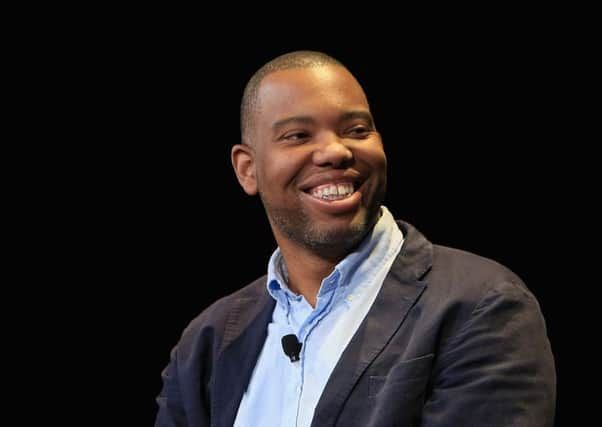Book review: The Water Dancer, by Ta-Nehisi Coates


It is not an easy novel which affords a succinct précis. In part this is because it is longer than it should be. The reader is introduced to a slave, Hiram, a boy in some ways, who is the illegitimate son of the local landowner and is required to tend to and serve his ghastly son. The plot, in some ways, follows the classic arc described by Joseph Campbell in The Hero With A Thousand Faces. We have a central character stranded, who is then tested in almost sadistic ways, meets a guru, is co-opted into a “secret war” against oppression and eventually returns, to reconcile and triumph. It also has the supernatural elements that might be expected. Hiram has a photographic memory and the ability to use “Conduction”, a means of transport. That word is deliberately ambiguous in the book, transport being both the physical moving of bodies through the “Underground”, and a dwam into other memories. Although he has this power, he cannot remember his own mother. This is not a spoiler, since any canny reader will realise as soon as that is mentioned that, at a crucial point, he will. It is like a cross between the original Star Wars films and Twelve Years A Slave by Solomon Northup or Frederick Douglass’s My Bondage And My Freedom.
It would be inappropriate to call such a novel “enjoyable”. It does keep the reader’s attention and there are some telling details, such as the strange hierarchy of “the Tasked”, “the Quality”, “the Low” and “Ryland’s Hounds” who track down escaped slaves, as well as the mysterious Underground and its ways. The local mansion to which Hiram is bonded is tellingly called “Lockless”, despite it being a place where people are locked or chained. This is the philosophical centre of the novel. It is an examination of what Hegel called the Herrschaft und Knechtschaft, usually translated as the “Master-Slave dialectic”. Basically, the servant is owned and indentured to the master, but the master relies on the servant. Hegel’s idea that each requires recognition, or fellow-feeling, is significant. Some of the novel’s best scenes are where we realise that the Quality are practically impotent without the Tasked. The “return home” sequence is full of melancholy in how their corrupt and inhumane state has to all extents and purposes imploded. This was part of the novel that also worried me. It seemed a bit like all those articles I read in the 1990s about how the USSR was “destined to fall”. The Quality, here, are as much in bondage; and one of the novel’s more pertinent observations is in how each will buy the other out, just as the slaves try to buy themselves out of slavery.
Advertisement
Hide AdIn terms of structure, there are a few infelicities. Hiram is narrating from the future, so, as a condition of narration, we know that he will not die in any of the awful sequences he has to endure. But we never get to see that future. The book ends abruptly, plot tied up, but with no true conclusion. Hiram seems to disappear. That may be the point. One of the most affecting scenes is when he is reading – and remembering – all the written narratives of former slaves. The novel in my hands is the equivalent, but at the same time it’s a mish-mash of pastiches – Austen-esque social commentary, Eliot-style moral scrutiny, Twain-ish sarcasm and snark and slang. It has the “magic realist” side-order from Marquez or Rushdie or Grass, but it seems like fairy-dust, and distracts from the political urgency. Folklore and superpowers are all well and good, but in an era where black men are shot by police with impunity, it does not progress the debate, but sugar-coats it with mythology. The puff from the publishers has Toni Morrison calling Coates the person who “might fill the intellectual void after James Baldwin”, which strikes me as rather blind towards the achievements of Percival Everett and Colson Whitehead, to name but two. The Water Dancer refers to Hiram having the power of memory but not the power of imagination. He becomes the novel’s empty centre – this genius child, an heir without a fiefdom, someone willing to break the laws and a lost soul. Yet, he never seems wholly to come alive. He is almost marginal in his own story.
This is a fluent, clever book, and I am sorry I could not reveal more of the plot twists. But it is also a first run around the track. In time I am sure Coates will write a fine novel. This is an interesting first attempt. Stuart Kelly
The Water Dancer, by Ta-Nehisi Coates, Bloomsbury, £16.99